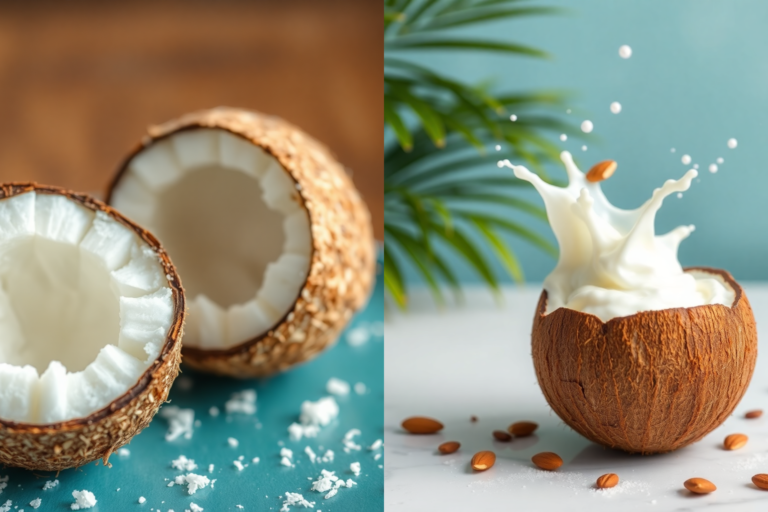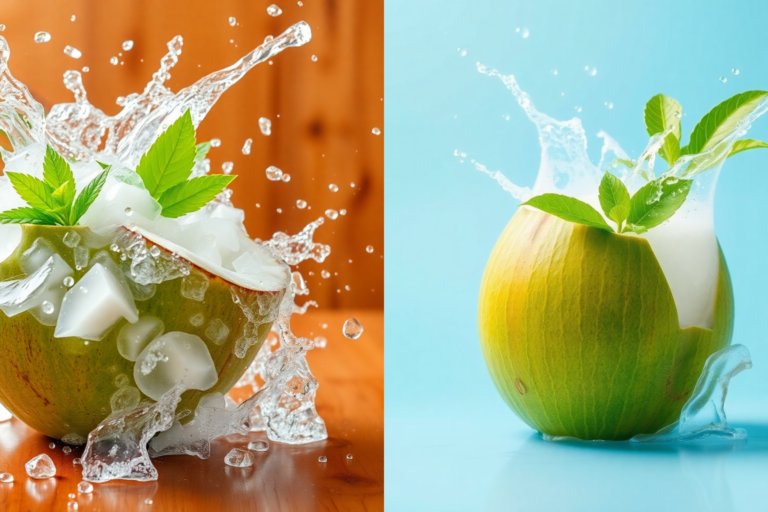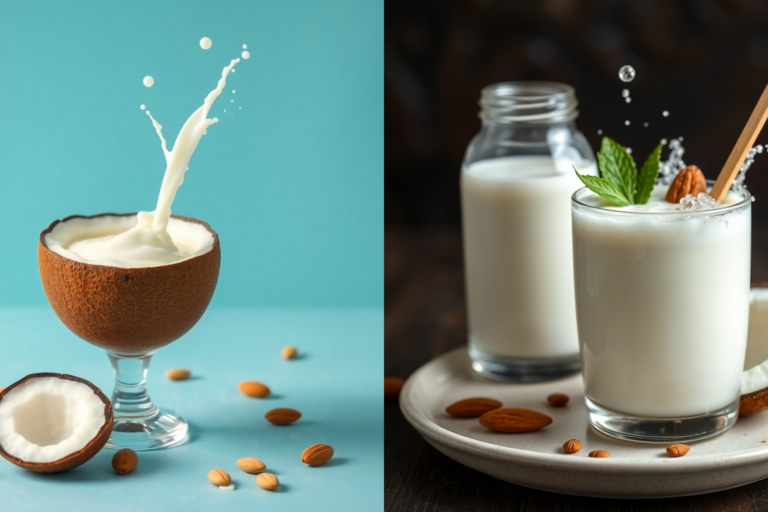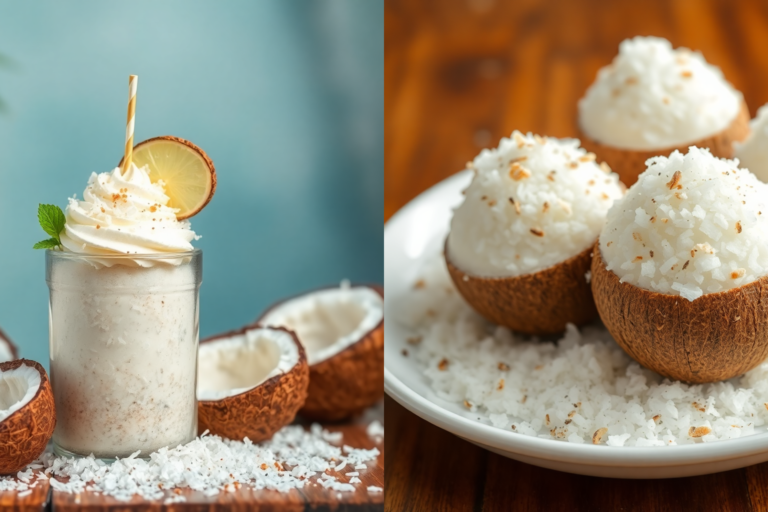Introduction of Grated Coconut
Brief Overview of Grated Coconut
Grated coconut, also known as shredded coconut, is a versatile ingredient commonly used in baking. It is derived from the white flesh of mature coconuts that have been dried and finely shredded. Grated coconut adds a delightful texture and subtle, nutty flavor to various baked goods, making it a popular choice in both sweet and savory recipes. Its natural sweetness and rich coconut flavor enhance the taste profile of cookies, cakes, muffins, and even bread. Additionally, grated coconut can be used in crusts, toppings, and fillings to elevate the overall taste and visual appeal of baked products.
Importance of Using Grated Coconut in Baking
Incorporating grated coconut into baking not only enriches the flavor but also contributes valuable nutrients and texture. The unique texture of grated coconut adds a pleasing crunch and chewiness to baked goods, creating a satisfying eating experience. Beyond its culinary benefits, grated coconut is packed with essential nutrients that offer several health advantages. It is a good source of dietary fiber, which supports digestive health by aiding in regular bowel movements and preventing constipation. Furthermore, grated coconut is rich in healthy fats, including medium-chain triglycerides (MCTs), which can provide sustained energy and support overall metabolic health.
Grated coconut is also an excellent addition to recipes for those looking to enhance their nutritional intake. It is high in important minerals such as manganese, iron, and copper, which are crucial for bone health and metabolic functions. The presence of antioxidants in grated coconut helps combat oxidative stress and inflammation, contributing to overall well-being.
By using grated coconut in your baking, you can not only enjoy its distinctive taste and texture but also benefit from its nutritional properties. Whether you’re baking a coconut cream pie, coconut muffins, or simply adding a sprinkle of grated coconut to your favorite recipes, this ingredient offers both culinary and health benefits. Embracing grated coconut in your baking repertoire can lead to delicious and nutritious results that delight the palate and nourish the body.
Top 5 Ways to Use Grated Coconut in Baking
1. Coconut Muffins
Recipe Idea: To make delicious coconut muffins, start by preheating your oven to 375°F (190°C). In a large mixing bowl, combine 1 ½ cups all-purpose flour, ½ cup sugar, 1 teaspoon baking powder, and ½ teaspoon salt. In another bowl, whisk together 1 cup milk, 1 egg, ¼ cup melted butter, and 1 teaspoon vanilla extract. Gradually mix the wet ingredients into the dry ingredients until just combined. Fold in 1 cup of grated coconut. Pour the batter into a muffin tin lined with paper liners and bake for 20-25 minutes or until a toothpick inserted in the center comes out clean.
Benefits: Grated coconut adds moisture and flavor to the muffins, creating a rich, chewy texture. The subtle coconut taste enhances the overall flavor profile, making the muffins both satisfying and delightful.
2. Coconut Cookies
Recipe Idea: For irresistible coconut cookies, preheat your oven to 350°F (175°C). Cream together ½ cup butter, ½ cup granulated sugar, and ½ cup brown sugar until light and fluffy. Beat in 1 egg and 1 teaspoon vanilla extract. In a separate bowl, mix 1 ¼ cups flour, ½ teaspoon baking soda, and ¼ teaspoon salt. Gradually add the dry ingredients to the wet mixture, then fold in 1 cup of grated coconut. Drop spoonfuls of dough onto a baking sheet and bake for 10-12 minutes, or until the edges are golden brown.
Benefits: Grated coconut contributes to a crisp texture and imparts a subtle coconut flavor. It also adds a delightful chewiness, making each bite of the cookies uniquely satisfying.
3. Coconut Cake
Recipe Idea: To bake a moist coconut cake, preheat your oven to 350°F (175°C). Grease and flour two 9-inch round cake pans. In a bowl, cream together 1 cup sugar and ½ cup butter until light and fluffy. Beat in 2 eggs, one at a time, followed by 1 teaspoon vanilla extract. In another bowl, sift 1 ½ cups flour, 1 ½ teaspoons baking powder, and ¼ teaspoon salt. Alternately add the dry ingredients and 1 cup of milk to the creamed mixture. Fold in 1 cup of grated coconut. Pour the batter evenly into the prepared pans and bake for 25-30 minutes. Let the cakes cool before frosting with a coconut-flavored frosting, topped with additional grated coconut.
Benefits: Grated coconut enhances the cake’s flavor, adding a rich coconut essence. It also adds a delightful texture to both the cake and the frosting, making the dessert even more enjoyable.
4. Coconut Macaroons
Recipe Idea: For chewy coconut macaroons, preheat your oven to 325°F (165°C). In a large bowl, mix 2 cups of grated coconut with ½ cup sugar and ¼ cup all-purpose flour. In another bowl, whisk 2 egg whites until stiff peaks form, then gently fold them into the coconut mixture. Drop spoonfuls of the mixture onto a baking sheet lined with parchment paper and bake for 15-20 minutes or until the edges are golden brown.
Benefits: Grated coconut is essential for achieving the classic chewy texture of macaroons. It also contributes to the macaroons’ sweet, tropical flavor, making them a delightful treat.
5. Coconut Crumb Topping
Recipe Idea: To create a crunchy coconut crumb topping, combine ½ cup grated coconut, ½ cup flour, ¼ cup sugar, and ¼ cup melted butter in a bowl. Mix until crumbly. Sprinkle this mixture over pies, crisps, or coffee cakes before baking. Bake according to your recipe’s instructions until the topping is golden brown and crisp.
Benefits: Grated coconut adds a crunchy, sweet layer to baked goods, enhancing both texture and flavor. The coconut crumb topping complements a variety of desserts, providing a delightful contrast to softer fillings.
Additional Tips for Baking with Grated Coconut
When baking with grated coconut, understanding how to choose the right type, store it properly, and explore substitutions can significantly enhance your culinary results. Here’s a comprehensive guide to help you get the most out of grated coconut in your baking endeavors.
Choosing the Right Grated Coconut
When selecting grated coconut for your baking needs, the choice between sweetened and unsweetened varieties can impact the final flavor of your baked goods. Sweetened grated coconut is often used in recipes that require added sugar or a more pronounced coconut flavor, such as in cakes and cookies. On the other hand, unsweetened grated coconut is ideal for those who prefer a less sugary taste or are aiming to control their sugar intake.
Additionally, grated coconut comes in different textures: fine grated coconut and shredded coconut. Fine grated coconut has a smoother texture and integrates well into batters and doughs, providing a subtle coconut flavor without adding noticeable texture. Shredded coconut, with its larger flakes, adds a more pronounced coconut texture and is excellent for topping baked goods or creating a more textured bite.
Storage
To maintain the freshness and extend the shelf life of your grated coconut, proper storage is crucial. Store grated coconut in an airtight container to protect it from moisture and air, which can lead to spoilage. Keeping the container in a cool, dry place is essential. For long-term storage, consider refrigerating or freezing grated coconut. In the refrigerator, grated coconut can last up to 6 months, while in the freezer, it can be stored for up to a year. Make sure to label and date the container to track its freshness.
Substitutions and Variations
In recipes calling for grated coconut, you can experiment with various substitutions and variations to suit your taste preferences or dietary needs. If you’re looking for alternatives, toasted coconut flakes can provide an extra layer of flavor and crunch. For a nutty twist, try incorporating chopped nuts like almonds or walnuts. Adding spices such as cinnamon or nutmeg can also enhance the flavor profile of your baked goods.
When experimenting with grated coconut in recipes, keep in mind that it can be combined with other ingredients to create unique flavors and textures. For example, mixing grated coconut with dried fruits or chocolate chips can elevate your cookies and bars. Additionally, incorporating coconut milk or coconut oil can further intensify the coconut flavor and add moisture to your baked treats.
Conclusion: Embrace Grated Coconut in Baking for Flavor and Nutrition
Recap of Uses: Summarize the Top Five Ways to Use Grated Coconut in Baking and Its Benefits
Grated coconut is an incredibly versatile ingredient that can elevate your baking recipes in numerous ways. Here’s a quick recap of the top five uses and benefits of incorporating grated coconut into your baked goods:
Flavor Enhancement: Grated coconut adds a delightful tropical flavor to baked items. Whether you’re making coconut cookies, coconut bread, or coconut muffins, the unique taste of grated coconut can make your treats stand out.
Texture Addition: The texture of grated coconut provides a pleasant chewiness to your baked goods. From coconut scones to coconut pie crusts, the texture of grated coconut enhances the overall mouthfeel and adds an interesting element to your baking.
Nutritional Boost: Incorporating grated coconut into your recipes can significantly boost the nutritional profile of your baked goods. Grated coconut is rich in dietary fiber, healthy fats, and essential minerals. Adding it to your coconut bread or coconut muffins can increase their fiber content and overall health benefits.
Natural Sweetness: Grated coconut brings a natural sweetness to baked goods, reducing the need for additional sugars. This can make your recipes not only tastier but also healthier. Coconut cookies and coconut cakes made with grated coconut have a naturally sweet and satisfying flavor.
Versatile Applications: Grated coconut can be used in a variety of baked goods, from sweet treats like coconut pie to savory options like coconut scones. Its versatility makes it an excellent ingredient for experimenting with new recipes and enhancing traditional ones.
Encouragement to Experiment with Grated Coconut
We encourage you to experiment with grated coconut in your baking adventures. Its ability to add flavor, texture, and nutritional benefits makes it a valuable ingredient to have on hand. Whether you’re a seasoned baker or just starting out, incorporating grated coconut into your recipes can lead to delicious and wholesome creations.
By adding grated coconut to your baking repertoire, you can enjoy a range of benefits, including improved texture, enhanced flavor, and a boost in nutrition. So, go ahead and explore the many ways you can use grated coconut in your baked goods.











